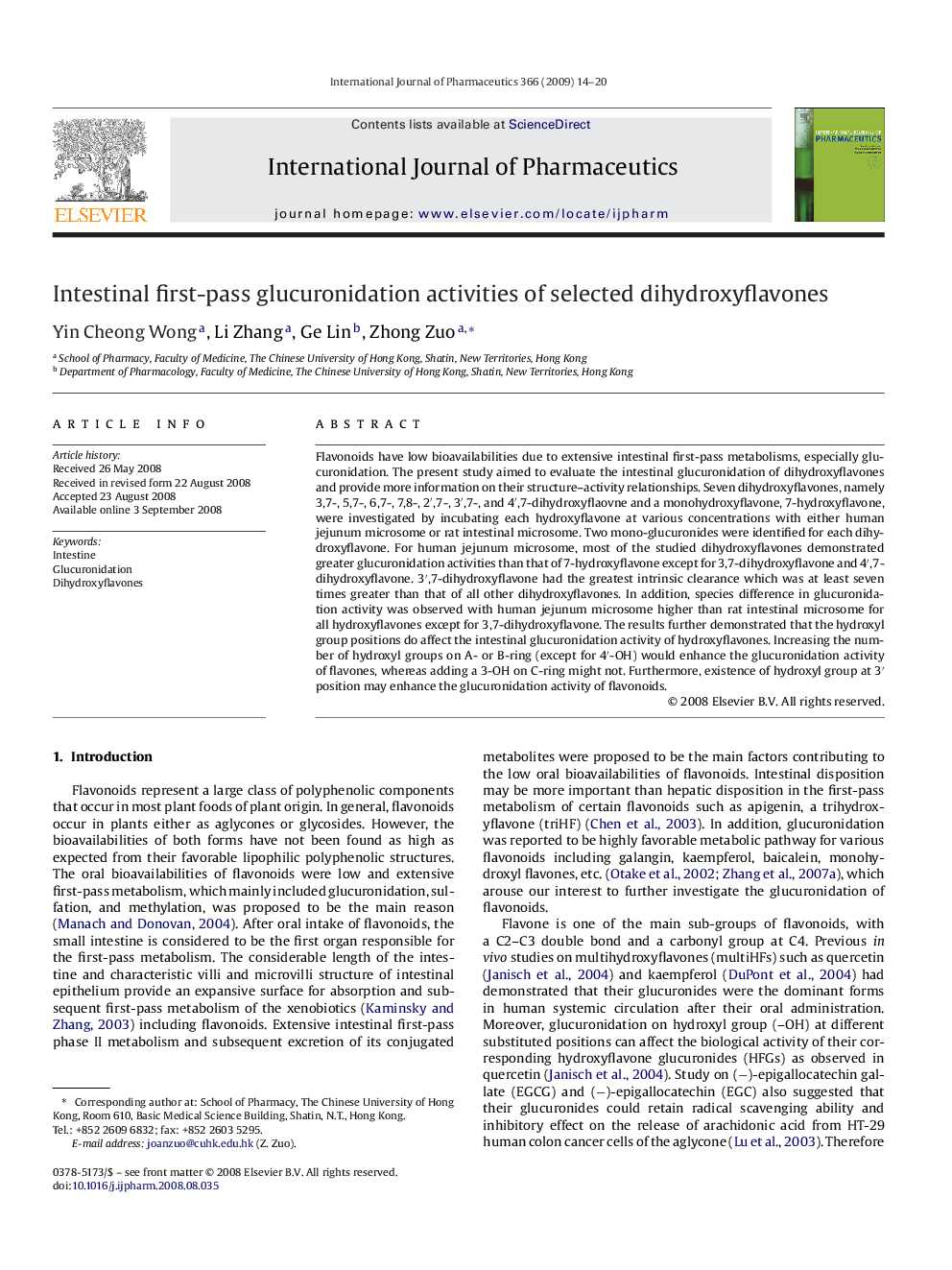| Article ID | Journal | Published Year | Pages | File Type |
|---|---|---|---|---|
| 2505160 | International Journal of Pharmaceutics | 2009 | 7 Pages |
Flavonoids have low bioavailabilities due to extensive intestinal first-pass metabolisms, especially glucuronidation. The present study aimed to evaluate the intestinal glucuronidation of dihydroxyflavones and provide more information on their structure–activity relationships. Seven dihydroxyflavones, namely 3,7-, 5,7-, 6,7-, 7,8-, 2′,7-, 3′,7-, and 4′,7-dihydroxyflaovne and a monohydroxyflavone, 7-hydroxyflavone, were investigated by incubating each hydroxyflavone at various concentrations with either human jejunum microsome or rat intestinal microsome. Two mono-glucuronides were identified for each dihydroxyflavone. For human jejunum microsome, most of the studied dihydroxyflavones demonstrated greater glucuronidation activities than that of 7-hydroxyflavone except for 3,7-dihydroxyflavone and 4′,7-dihydroxyflavone. 3′,7-dihydroxyflavone had the greatest intrinsic clearance which was at least seven times greater than that of all other dihydroxyflavones. In addition, species difference in glucuronidation activity was observed with human jejunum microsome higher than rat intestinal microsome for all hydroxyflavones except for 3,7-dihydroxyflavone. The results further demonstrated that the hydroxyl group positions do affect the intestinal glucuronidation activity of hydroxyflavones. Increasing the number of hydroxyl groups on A- or B-ring (except for 4′-OH) would enhance the glucuronidation activity of flavones, whereas adding a 3-OH on C-ring might not. Furthermore, existence of hydroxyl group at 3′ position may enhance the glucuronidation activity of flavonoids.
